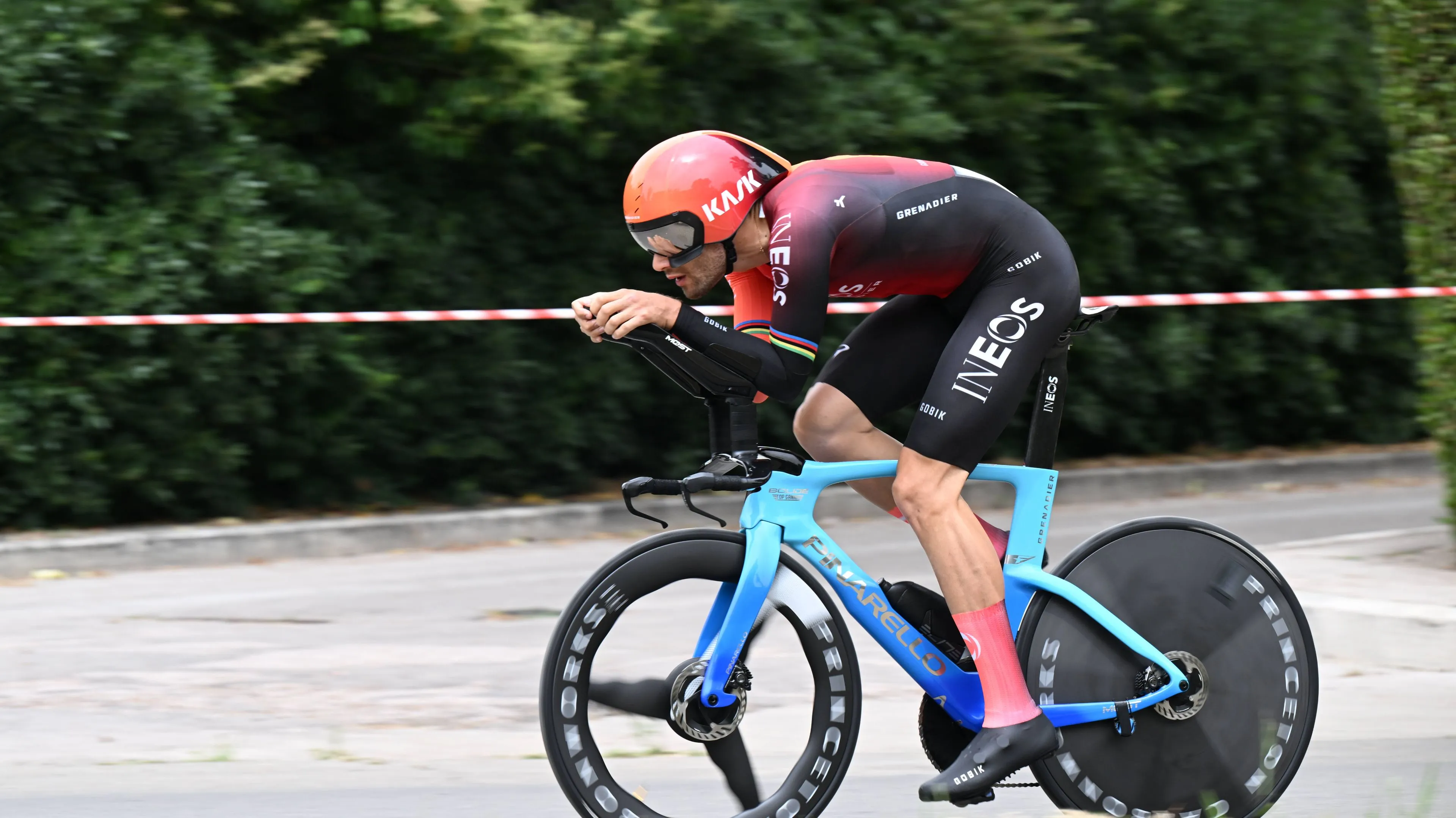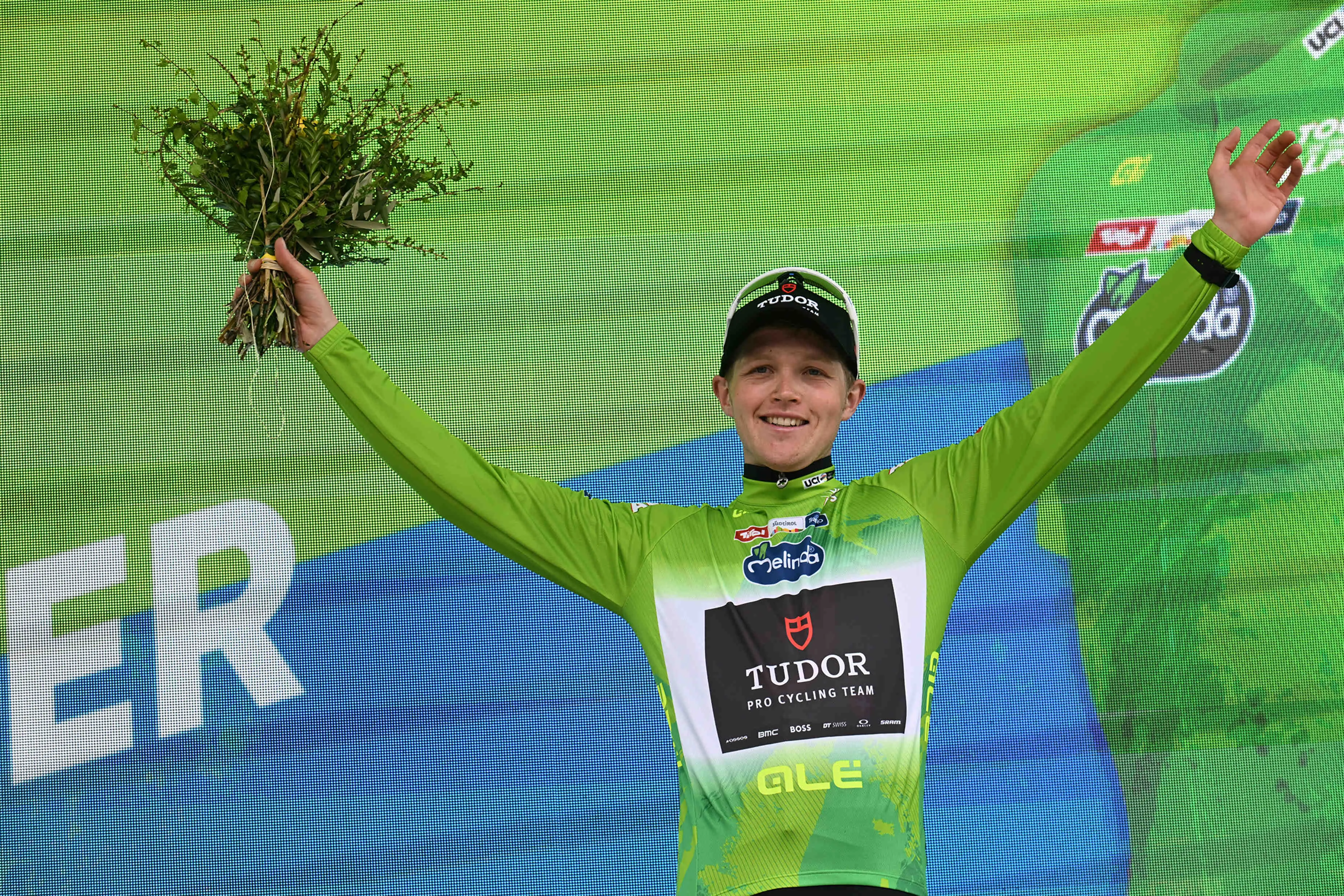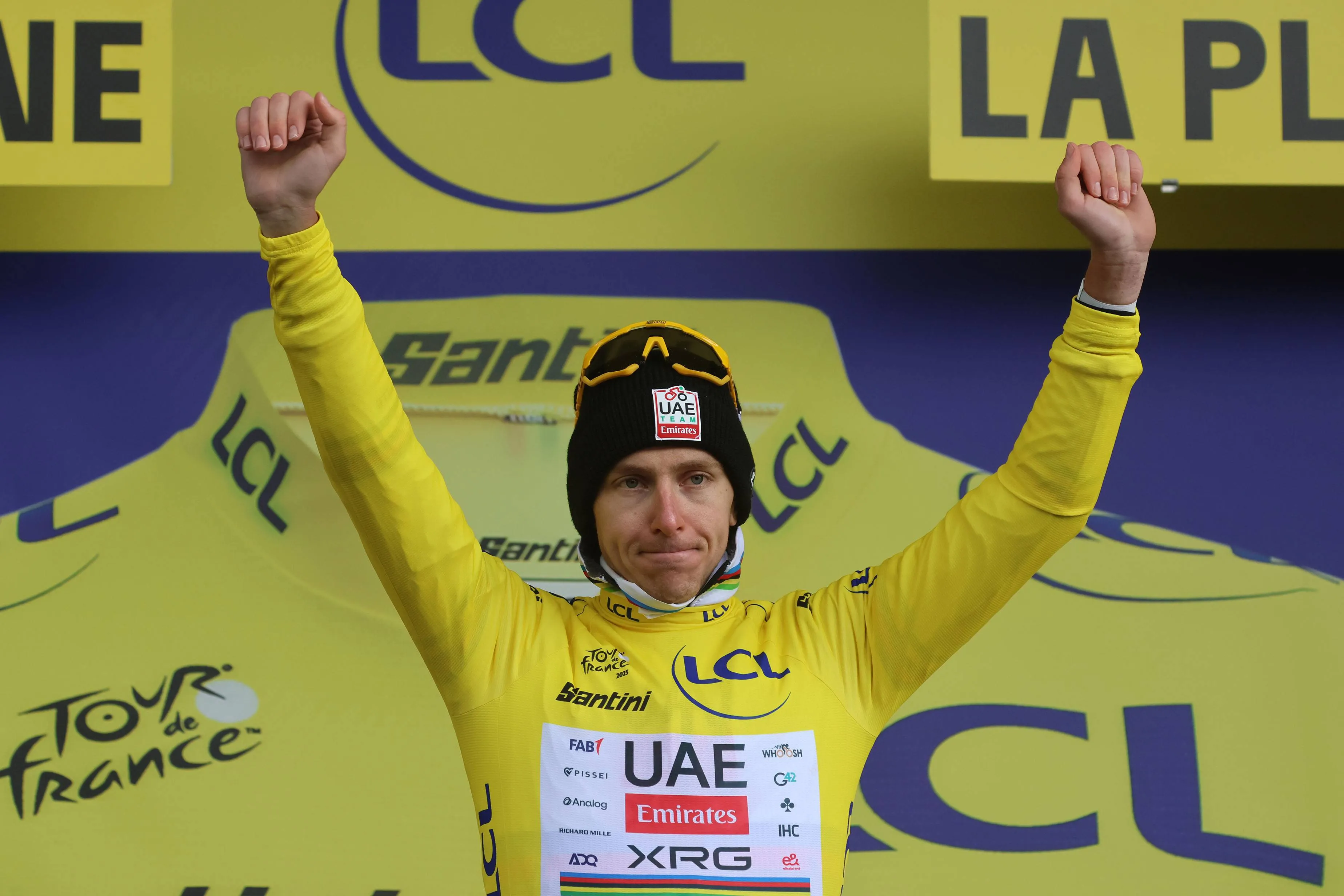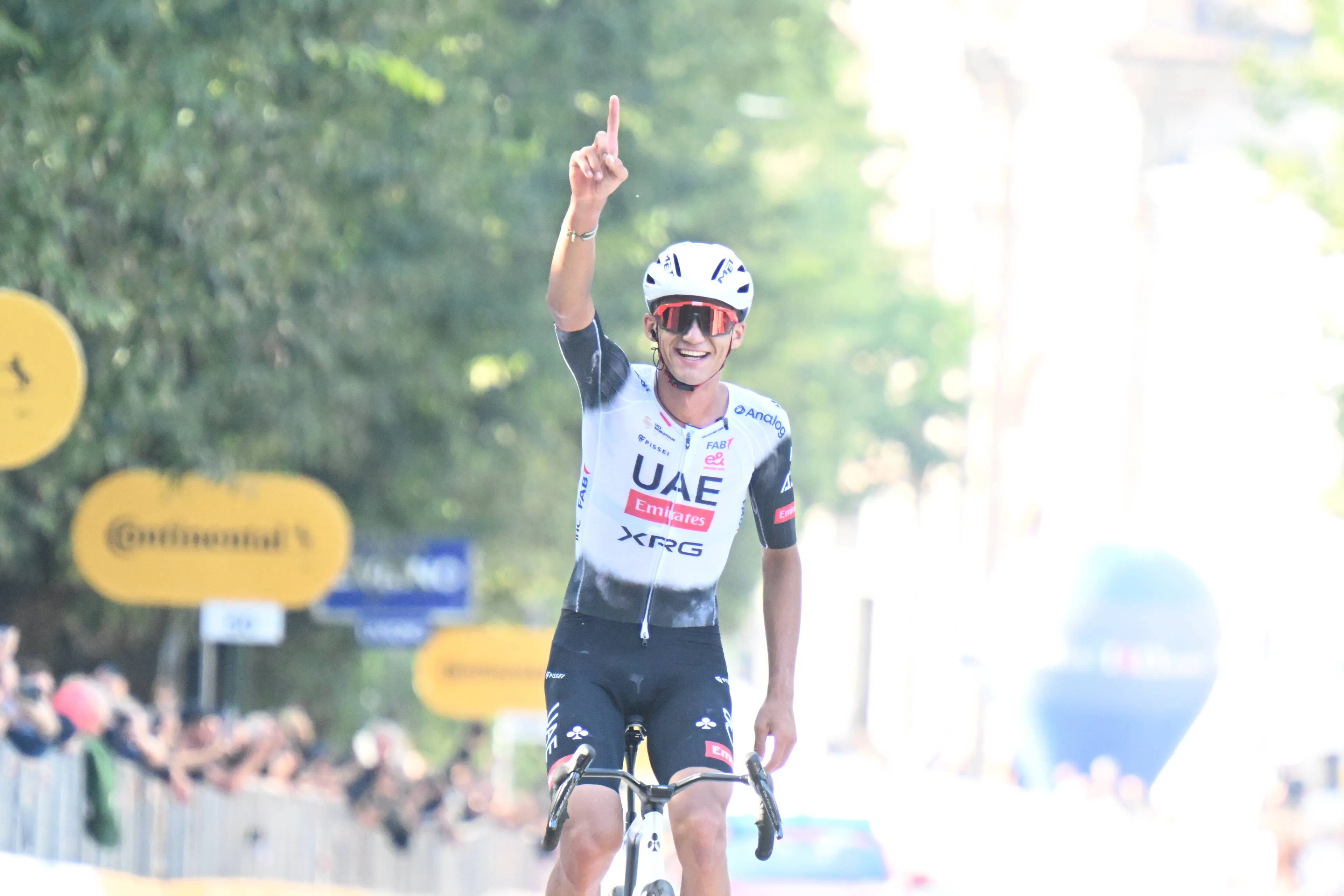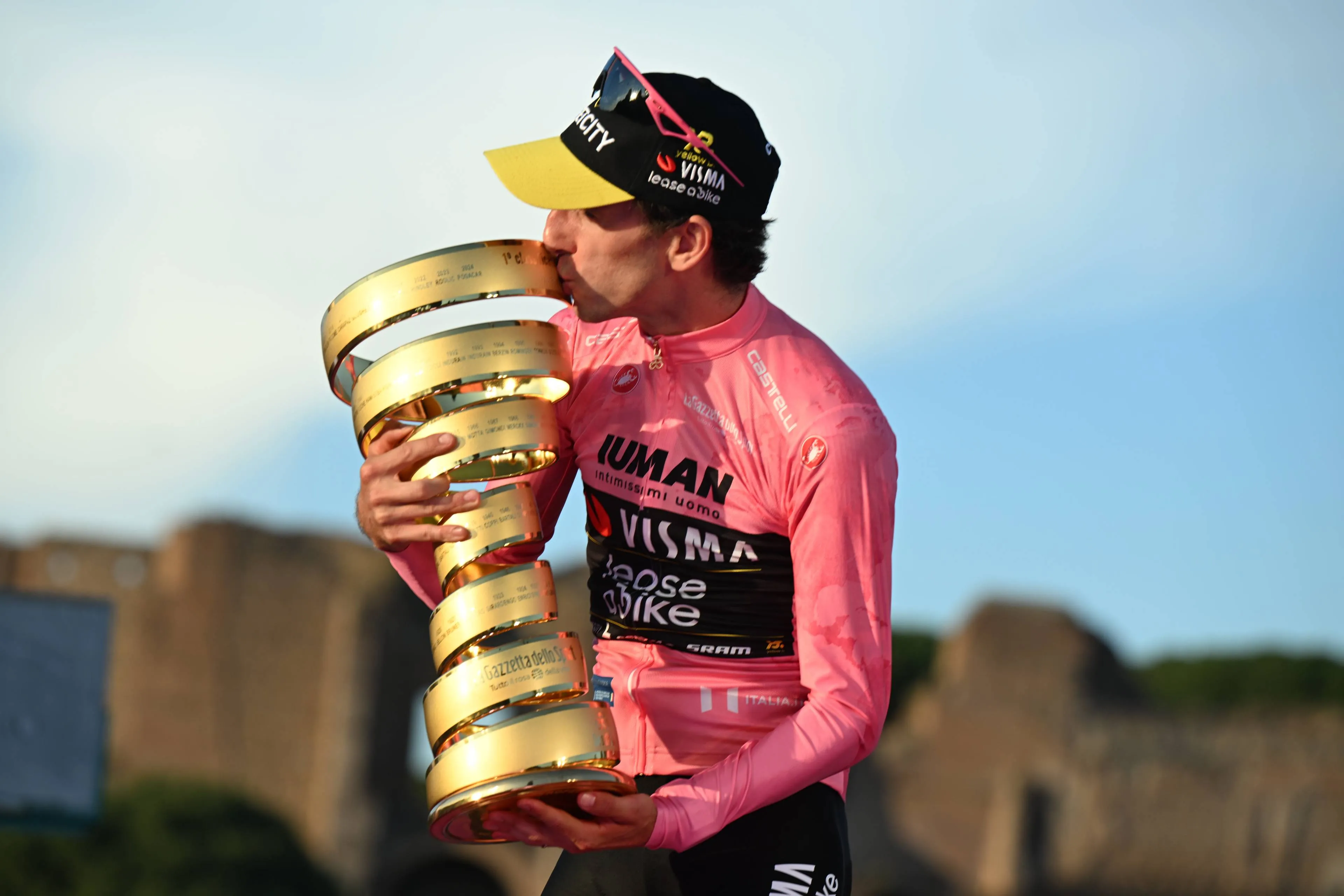ANALYSIS | Paris-Nice vs Tirreno-Adriatico: Which stage race is more important for the season ahead?
CyclingMonday, 10 March 2025 at 10:45

This week is an important one, as it sees two of the most
important stage races before the grand tour season: Paris-Nice and
Tirreno-Adriatico. These races stand as two of the most significant
early-season stage races, offering riders and teams crucial opportunities to
test their form and set the tone for the months ahead.
Taking place simultaneously in early March, these races
serve different purposes within the cycling calendar, with each providing
distinct challenges and strategic importance. While Paris-Nice is often seen as
the first real general classification test for Grand Tour hopefuls,
Tirreno-Adriatico is regarded as a vital preparation race for both the Giro
d’Italia and the spring classics.
Read also
But which race is more important? And does it ultimately
depend on the rider?
The debate over which race holds greater importance remains
ongoing, with historical prestige, parcours characteristics, and rider
participation all playing a role in their significance. So let’s take a closer
look at both Paris-Nice, and Tirreno-Adriatico.
Read also
History
Paris-Nice, commonly referred to as the "Race to the
Sun," has been a fixture in professional cycling since 1933.
Created by Parisian
newspaper magnate Albert Lejeune, it was initially designed to promote his
publications but quickly established itself as a major event. The race
traditionally starts in the cold and often windy northern regions of France
before heading south towards the Mediterranean, with riders facing a mix of
flat, hilly, and mountainous terrain.
Over the years, it has been won by some of the sport’s
greatest names, including Jacques Anquetil, Eddy Merckx, and Sean Kelly, who
remains the record-holder with seven consecutive victories from 1982 to 1988.

Jonas Vingegaard is in action at Paris-Nice this week
Tirreno-Adriatico, known as the "Race of the Two
Seas," is a relatively younger event, having been first held in 1966. The
race stretches from Italy’s Tyrrhenian coast to the Adriatic Sea, taking in a
diverse mix of terrain that includes rolling hills, punchy climbs, and time
trials.
While it may not have the same long-standing prestige as
Paris-Nice, its importance has grown significantly in the last two decades,
attracting many of the world's top riders. Historically, Tirreno-Adriatico has
served as the primary preparation race for Milano-Sanremo, but it has also
become a proving ground for general classification contenders and Grand Tour
specialists.
Read also
21st century winners of Tirreno-Adriatico include
Vincenzo Nibali, Tadej Pogacae, and Primoz Roglic, and last year Jonas
Vingeaard, underlining its status as a high-quality early-season test.
The course
The parcours of both races differ considerably, influencing
the type of riders they attract. Paris-Nice is known for its unpredictable
weather conditions, with crosswinds and rain often shaping the early stages
before the mountains come into play in the latter half of the race.
While some editions have included individual time trials,
the race generally features a balanced mix of opportunities for sprinters,
puncheurs, and climbers. The final weekend is typically decisive, with the
mountainous terrain around Nice providing a stern test for general
classification hopefuls.

Van der Poel is one of the stars in Italy this week
The iconic Col d’Èze has played a crucial role in shaping
past editions, though more recent routes have introduced alternative climbs
that ensure an exciting finale.
Tirreno-Adriatico, by contrast, places greater emphasis on
time trials and medium-mountain stages. The race frequently begins with a team
time trial or individual time trial, giving general classification contenders
an early opportunity to gain time on their rivals.
Read also
The inclusion of steep, punchy climbs, such as Monte
Terminillo, makes it a valuable test for climbers, while the final stage is
traditionally a flat stage along the Adriatic coast. This structure makes
Tirreno-Adriatico particularly appealing to Grand Tour riders, as it allows
them to gauge their climbing and time-trialling abilities in a competitive
setting, and also to sprinters as well.
Clearly, both are perfect grand tour preparation races.
Schedule
The scheduling of Paris-Nice and Tirreno-Adriatico in the
same week often forces teams to make important decisions about where to send
their strongest riders.
Paris-Nice typically attracts general classification riders
with ambitions for the Tour de France, as well as some sprinters looking to
test their legs ahead of Milano-Sanremo in a more unique way than just heading
for Tirreno-Adriatico.
Read also
Meanwhile, Tirreno-Adriatico draws a broader mix of
specialists, including those targeting the Giro d'Italia, classics contenders
looking to fine tune their form, and climbers seeking an early-season
challenge. The dual scheduling of these races means that top-tier riders are
split across both events, preventing direct head-to-head battles between all of
the sport’s biggest names.
Instead, we’ll need a bit more patience before we see some
of the best face off.
Despite this division, both races maintain their importance
within the cycling calendar. Paris-Nice is often seen as the first real
indicator of how Tour de France contenders are shaping up, while
Tirreno-Adriatico provides critical feedback for those preparing for the Giro
d'Italia or targeting the classics.
Read also
The race schedules allow teams to split their resources
effectively, with some prioritising Paris-Nice for its high-profile exposure
and history, while others opt for Tirreno-Adriatico's more varied parcours as a
means of fine tuning their season’s ambitions.
In recent years, both races have produced some epic battles.
The 2023 edition of Paris-Nice saw a highly anticipated clash between Tadej
Pogacar and Jonas Vingegaard, with Pogacar ultimately emerging victorious whilst
David Gaudu actually managed to squeeze into second ahead of the Dane.
Meanwhile, Tirreno-Adriatico has consistently provided a
platform for riders like Primoz Roglic to understand their form, with Vingegaard
also having come out on top over Ayuso and Hindley 12 months ago.
So, which race is more important?
Read also
The debate over which race is more important is complex, as
it depends on the perspective taken. From a historical standpoint, Paris-Nice
holds greater prestige due to its long-standing status as one of the most
iconic week-long stage races. Its position as the first major European stage
race of the year and its history of producing legendary winners cement its
reputation.
However, from a practical perspective, Tirreno-Adriatico offers a
more balanced preparation for the Grand Tours and spring classics, as it
combines time trials, huge climbing efforts, and rolling terrain.
Another factor influencing the importance of these races is
media coverage and the fans. Because both events run simultaneously,
broadcasters and fans must divide their attention, sometimes resulting in one
race overshadowing the other.
Read also
While Paris-Nice enjoys strong coverage in France and is
closely followed by those anticipating the Tour de France, Tirreno-Adriatico
benefits from Italy’s passionate cycling fanbase and its association with the
Giro d’Italia. The Italian race’s placement as a lead-in to Milano-Sanremo also
ensures that it holds significant relevance in the build-up to the first
Monument of the season.
And, whilst Paris-Nice is a trailer for the Tour de France,
July is still 4 months away. With that in mind, Tirreno-Adriatico is actually a
preview for more immediate races, with the classics right around the corner.
Beyond the sporting significance, both races contribute
economically and culturally to their respective regions. Paris-Nice brings
valuable tourism and media attention to towns across France, culminating in a
grand finale in Nice that boosts the local economy.
Read also
Tirreno-Adriatico, with its scenic routes traversing both
coastal and inland regions of Italy, similarly promotes tourism and local
investment. These factors further solidify their importance, not just within
cycling but also within the broader sporting and economic landscape.
Ultimately, the significance of Paris-Nice and
Tirreno-Adriatico depends on the individual goals of teams and riders. While
Paris-Nice remains a prestigious milestone for Tour de France contenders and a
valuable race for early-season form-building, Tirreno-Adriatico offers a more
rounded test, particularly for those with broader ambitions across the classics
and Grand Tours.
Read also
Each race plays a vital role in shaping the narrative of the
cycling season, and their continued coexistence ensures that early March
remains one of the most exciting periods in the sport.
Luckily, as fans, we get to enjoy both!
claps 1visitors 1
Just in
Popular news
Latest comments
- Nordhagen? develop this young talent.
 maria2024202408-01-2026
maria2024202408-01-2026 - Young Del Toro seem to have dealt with pressure exceptionally well last year. The Maglia Rosa lose last year was due to tactics, not pressure. It was a former young team mate of his (whose name rhymes with Caruso) who time and again didn't cope well. It's very reasonable to use Isaac as a super domestic for Tadej in TDF and avoid yet another leadership friction in the Giro. UAE team could have been honest about it, when the main reason is seemingly clear. Nothing wrong about it.BM08-01-2026
- „We’re not asking anything of him, except that he’s there.“ … what was the problem with Ayuso then?Ketterechts08-01-2026
- What an overtly bias story!whit2pet08-01-2026
- The result at the TDF is independent of whether he rides Giro or not. 2nd at the TDFabstractengineer08-01-2026
- I wouldn't write them off for monuments any more than I would write off everyone competing against MVDP and Tadej. These two are the only clear favorites, but, if something happens Quick- Step has as good a chance as anyone.mij08-01-2026
- look at Remco and Egan. careers cut short if not permanently changed due to offseason crashes on the road. crashes happen, sadly, and being in competition does not make it any more or less likely.mij08-01-2026
- Makes sense. Finally got the Giro monkey off his back. Got a stage in all three GTs. He's never going to win the Tour, and probably isn't super fussed about fighting the young guns for leadership at other stage races. Why not just go out on a high?antipodeanpedalfan08-01-2026
- Everyone begins and ends life the same way. It's what we do in the middle that counts.paule08-01-2026
- Fact check false: I've crashed indoors before.acem8207-01-2026
Loading
Write a comment



